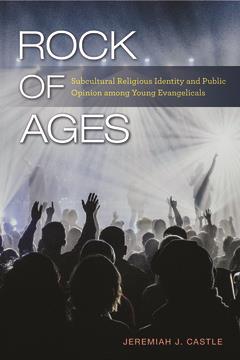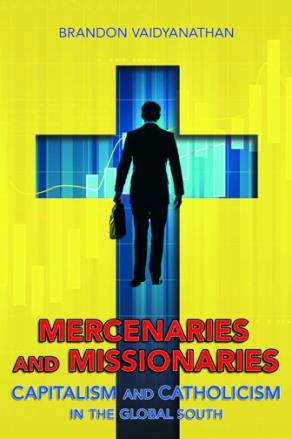
◼ While surveys have found that younger evangelicals are not substantially more liberal than their older counterparts, the media still regularly reports on the growing gap in political views between younger and older evangelical cohorts. The new  book Rock of Ages (Temple University Press, $34.95), by Jeremiah J. Castle, confirms previous studies showing relatively minor differences between committed evangelical young people and older evangelicals. There is some liberalization on gay marriage, welfare, and immigration, but pro-life concerns and fiscal conservatism remain high. Some of this gap is due to age-based differences among “low commitment” younger evangelicals, meaning those who are less active in their congregations. But liberalization of views on homosexuality, the environment, and welfare is common among both low- and high-commitment evangelicals and may be related to changes in the broader culture (such as the postponement of marriage and the wide acceptance of gay rights), according to Castle.
book Rock of Ages (Temple University Press, $34.95), by Jeremiah J. Castle, confirms previous studies showing relatively minor differences between committed evangelical young people and older evangelicals. There is some liberalization on gay marriage, welfare, and immigration, but pro-life concerns and fiscal conservatism remain high. Some of this gap is due to age-based differences among “low commitment” younger evangelicals, meaning those who are less active in their congregations. But liberalization of views on homosexuality, the environment, and welfare is common among both low- and high-commitment evangelicals and may be related to changes in the broader culture (such as the postponement of marriage and the wide acceptance of gay rights), according to Castle.
Through an analysis of Pew and Public Religion Research Institute surveys, Castle argues that the changes that have occurred in younger evangelicals’ views, mainly on immigration and the military-diplomacy tradeoff, have come more from forces outside of evangelicalism than within it (for example, from leadership changes or modifications in theology and practice). Because neither of these two issues are culture war issues and central to the evangelical tradition, Castle argues through a subcultural theory of religious identity that evangelicals have largely been able to sustain their beliefs. Evangelicals are able to build a subculture where political attitudes are transmitted to members, and the more one is immersed in this subculture the greater the conservatism. Even liberal evangelicals are more conservative on culture war issues than their secular counterparts, and Castle doesn’t see them advancing a distinct political movement. As for younger conservative evangelicals, because of the reduced political salience for them of gay rights issues (though he seems to underestimate their prolife activity and influence), Castle sees them involved in a shift from an offensive strategy to one of defending their freedoms.
◼ Brandon Vaidyanathan’s new book Mercenaries and Missionaries (Cornell University Press, $29.95) is a fascinating account and analysis of how global capitalism intersects with equally global forms of Christianity in the everyday lives of highly mobile IT professionals in Asia and the Middle East. The Catholic University of America sociologist studied the professional and religious lives of hi-tech guest workers in Bangalore (India’s Silicon Valley) and Dubai in the United Arab Emirates through in-depth ethnographic interviews and observations. The “mercenaries” he refers to in the title of the book are the latest wave of young business professionals, lured by promises of high salaries, bonuses, and consumerist lifestyles, and for whom high mobility (they often travel between India and such new business and offshore “call centers” as Dubai) and “cut-throat competition” are signs of ambition and success. At the same time, the workers profiled in the book seek solace and support through their churches and try to spread this Christian influence in their changing locales. Vaidyanathan is especially good in showing the contradictions that emerge from these professionals’ dual identities as mercenaries and missionaries, although not in the traditional way that sociologists have argued about the incompatibility of modern capitalism and globalization with traditional religion. In fact, the author argues that global capitalism’s creation of more “existential insecurity” for these workers increases the appeal of religion. The nature of these professionals’ work and its clash with their personal ethics and faith often leads them to reject its value as a vocation.
 Their tendency not to trust company higher-ups and their own colleagues due to experiences of workplace backstabbing and even spying exacts an emotional toll that leads to a further divorce between their work lives and personal lives. All of the professionals in this study attend churches and prayer groups that are part of what Vaidyanathan calls Evangelical-Charismatic Catholicism (ECC), which draws inspiration from both American televangelism (both Catholic and Protestant versions), the Catholic charismatic renewal, and orthodox Catholic practices. These parishes and particularly prayer groups provide a strong source of support and nurturing for these workers even if they rarely question the injustices of their workplace or the consumerism it encourages, fostering what the author calls “therapeutic individualism.” These believing professionals do see themselves as extending God’s presence to their workplace, even if in discreet ways (especially in Dubai, where Christian proselytizing is prohibited). And religious practices, such as tithing, prayer, and retreats, as well as involvement in civic life, did indirectly help some limit consumerism, even convincing some workers to exit or downscale corporate life. Vaidyanathan concludes that the capitalist mindset is difficult to escape in work and church environments and that without a “theology of work” that addresses these challenges for the laity, the contradictions of being both a mercenary and a missionary will likely continue.
Their tendency not to trust company higher-ups and their own colleagues due to experiences of workplace backstabbing and even spying exacts an emotional toll that leads to a further divorce between their work lives and personal lives. All of the professionals in this study attend churches and prayer groups that are part of what Vaidyanathan calls Evangelical-Charismatic Catholicism (ECC), which draws inspiration from both American televangelism (both Catholic and Protestant versions), the Catholic charismatic renewal, and orthodox Catholic practices. These parishes and particularly prayer groups provide a strong source of support and nurturing for these workers even if they rarely question the injustices of their workplace or the consumerism it encourages, fostering what the author calls “therapeutic individualism.” These believing professionals do see themselves as extending God’s presence to their workplace, even if in discreet ways (especially in Dubai, where Christian proselytizing is prohibited). And religious practices, such as tithing, prayer, and retreats, as well as involvement in civic life, did indirectly help some limit consumerism, even convincing some workers to exit or downscale corporate life. Vaidyanathan concludes that the capitalist mindset is difficult to escape in work and church environments and that without a “theology of work” that addresses these challenges for the laity, the contradictions of being both a mercenary and a missionary will likely continue.
◼ The massive two-volume Encyclopedia of Latin American Religions (Springer, $599.99), numbering 1,665 pages, is the result of a five-year undertaking by its editor Henri Gooren. The volumes amply document the vitality and trends in various new religions and the revival and transformation of older faiths throughout Latin America. With entries by more than 250 specialists, the encyclopedia looks at the demographics, history and current situations of religious groups both imported and more indigenous, many of which have been rarely documented in English. The various facets, movements (especially the Catholic charismatic renewal and liberation theology), and leaders of Roman Catholicism in each country and continent-wide are given expert treatment. The various Pentecostal groups that have mushroomed throughout Latin America are also given in-depth attention, both as stand-alone organizations and denominations and in relation to the role they play in the history of each nation (as, for instance, with Pentecostalism’s role as a major demographic, social, and political force in Brazil). The same can be said for such not so “new” religious movements as Mormonism and the Jehovah’s Witnesses, as well as the New Age movement (receiving a treatment of over 35 pages) and other transplants, such as Islam and Buddhism.
 In fact, Buddhism and Islam each receive almost 45 pages of attention compared to the much less space given to mainline Protestantism, which arguably has had more influence in the region than those two world religions, even if they show greater current growth. The Presbyterians are the only mainline denomination that has a separate entry (five pages), while Lutheranism (which has been especially prominent, at least historically, in Brazil and Argentina) and Methodism are only cited in the national profiles and statistics. Even much faster-growing groups, such as the non-charismatic and non-Pentecostal evangelicals (especially the Baptists) receive little attention (there is no entry on evangelicalism). It may be that the entries reflect the current state of research on Latin America, with those topics falling below the radar of academic researchers receiving fewer entries. Nevertheless, the match between current research and literature and the entries in these ambitious volumes often works to the benefit of the reader. For instance, the extensive treatment given to secularism and atheism in Latin America may surprise readers who see the continent as overwhelmingly religious. Yet the various entries on non-affiliation and non-religion, especially in the southern cone of South America, suggest the existence of secular competition as a challenge to religious and even spiritual groups and movements.
In fact, Buddhism and Islam each receive almost 45 pages of attention compared to the much less space given to mainline Protestantism, which arguably has had more influence in the region than those two world religions, even if they show greater current growth. The Presbyterians are the only mainline denomination that has a separate entry (five pages), while Lutheranism (which has been especially prominent, at least historically, in Brazil and Argentina) and Methodism are only cited in the national profiles and statistics. Even much faster-growing groups, such as the non-charismatic and non-Pentecostal evangelicals (especially the Baptists) receive little attention (there is no entry on evangelicalism). It may be that the entries reflect the current state of research on Latin America, with those topics falling below the radar of academic researchers receiving fewer entries. Nevertheless, the match between current research and literature and the entries in these ambitious volumes often works to the benefit of the reader. For instance, the extensive treatment given to secularism and atheism in Latin America may surprise readers who see the continent as overwhelmingly religious. Yet the various entries on non-affiliation and non-religion, especially in the southern cone of South America, suggest the existence of secular competition as a challenge to religious and even spiritual groups and movements.